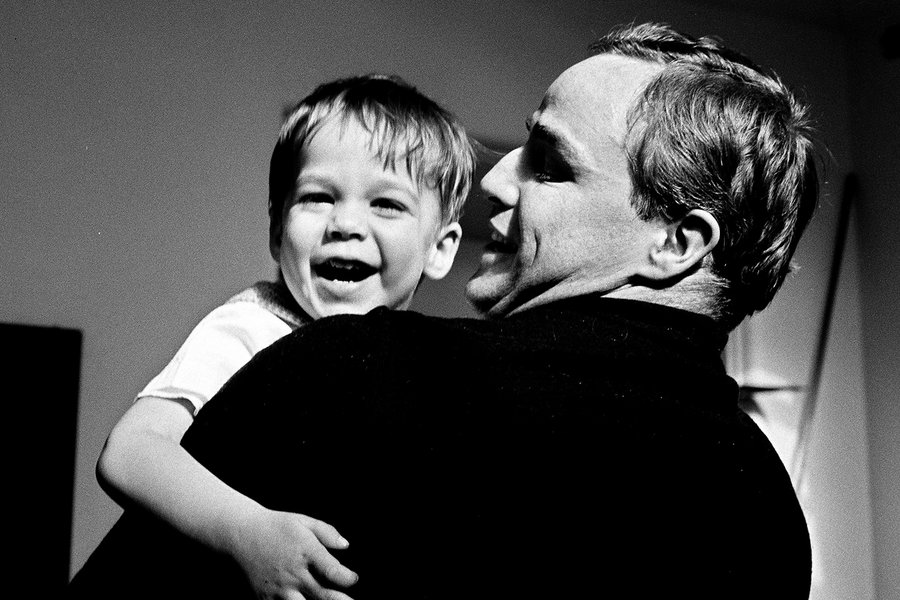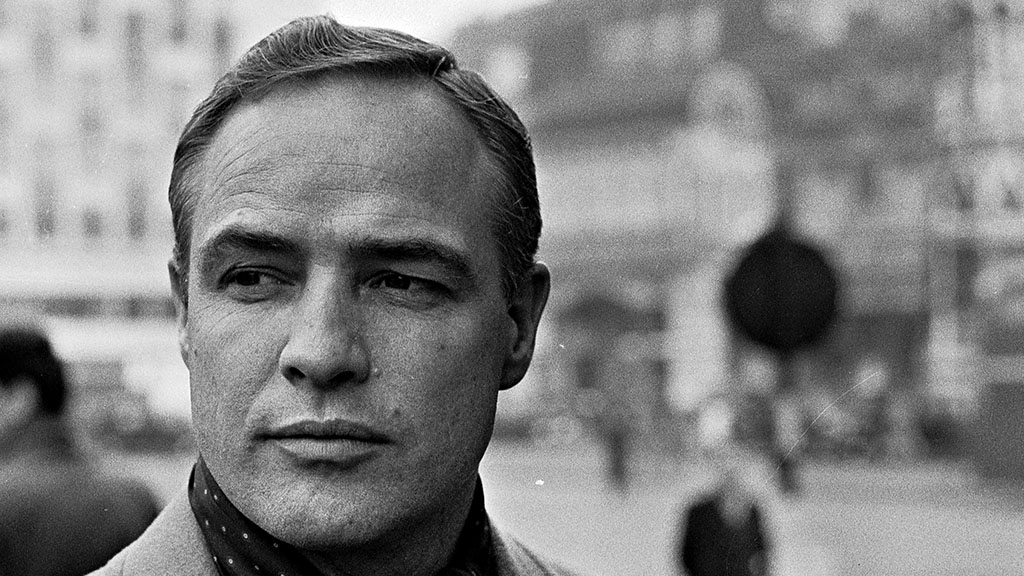Get To Know Marlon Brando – In His Own Words
DIRECTED BY STEVAN RILEY/2015
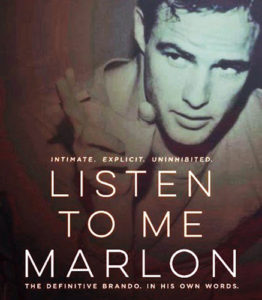 Marlon Brando is fraying. A digital image on a screen, emoting a deep run of pain, angst, and turmoil. Whatever story he’s telling can’t be as important as the story he’s telling himself. He’s reeling, an abstract image, lonely and isolated.
Marlon Brando is fraying. A digital image on a screen, emoting a deep run of pain, angst, and turmoil. Whatever story he’s telling can’t be as important as the story he’s telling himself. He’s reeling, an abstract image, lonely and isolated.
This is not the takeaway of someone’s initial viewing of Last Tango in Paris on blu-ray – although it could be. No, this is the opening minutes of Listen to Me Marlon, a truly compelling new documentary that is built upon the foundation of the many hours of personal audio recordings that the actor made throughout his lifetime. Early on, he states rather matter of factly that he was scanned – literally scanned into a computer – asked by the technicians to make numerous expressions and gestures. Since Brando died in 2004, that would explain the dated blue, abstract nature of the CGI results.
The face on screen is unmistakably him, but the whole head is not intact. Digitial tendrils spin off of the cranium, evoking the Supreme Intelligence of Marvel’s Kree Empire, or the facial congestion of robot sentinels in the end of the final Matrix film. Someone somewhere once upon a time must’ve convinced Brando to agree to this, perhaps promising that if he were captured digitially, he’d “live forever”. And yet, the documentary goes on to detail the depths to which Brando was disillusioned with the film business, and how phsyical escape was his only recourse. (Brando ended up owning an island with a vast compound in Tahiti, a land of particular fascination and joy to him.) In any case, the digital head isn’t the most gripping element of first minutes of this film. It is only glimpsed in the opening and closing of the movie. The rest is pure Brando.
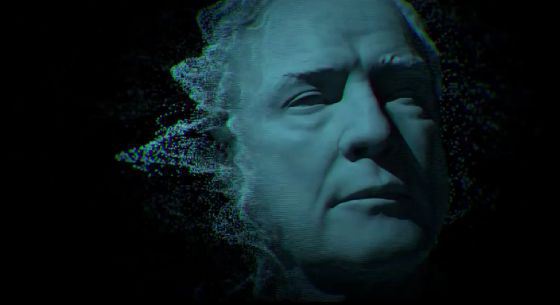
As one might expect, Listen to Me Marlon chronicles the life and career of Marlon Brando. There are plenty of film clips of his work both iconic (On the Waterfront, The Wild One, The Godfather) and less well remembered (Candy, Viva Zapata!, Guys and Dolls). There are numerous vintage interview clips as well, with very little that appears to be dreaded newly recreated footage. (A documentary pet peeve for this critic.) There’s even a few invaluable moments of his iconoclast acting teacher, Stella Adler, instructing students.
But more than that, “Listen to Me Marlon” succeeds where so many other such documentaries fail – it brings viewers into the all-too-human soul of the actor, an inwardly intrepid man who’s taste for knowledge was insatiable and to whom terrible tragedy would be no stranger.
The film’s director Stevan Riley has achieved the rare feat of crafting a documentary with enough of its own cinematic flare to warrant seeking out on the big screen. It is as absorbing as it is informative, one of the most significant documentaries of the year. Riley may be the one guiding this tour, but it’s Brando’s deep footprints he’s following. Although Riley veers towards the admiration trap time and again, it’s clear that the subject is worthy of the treatment. In the end, it’s all too humanizing, which is a very good thing. Primarily, Riley demonstrates that while Brando was a man of tremendous genius, and a master in his field, he was never in control of the areas of his life that mattered most to him. (None of us truly are…) It is not a happy film, but it is fulfilling.
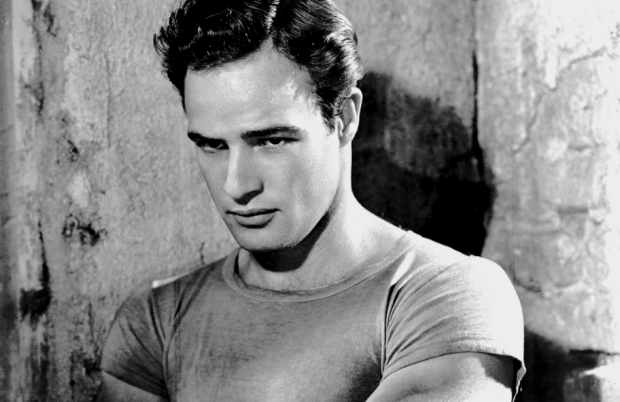 Between this film and the recently published biography by Susan L. Mizruchi, “Brando’s Smile”, both of which are among the first projects to explore the actor via his own treasure trove of tapes, journals, and book notations, much of what we had assumed to be true about Brando is all but disproven. In place of the swept away myths are revelations less glamourous than simply personally revelatory. Like Bob Dylan, we learn that Brando was fond of misleading the media when it came to managing his public image. Leery of having a “public image” at all, Brando cultivated a string of false origins, hostile postures, and playful rebukes. What did all of this have to do with acting? Although also revealed to be quite the intellectual, he never could figure one that out.
Between this film and the recently published biography by Susan L. Mizruchi, “Brando’s Smile”, both of which are among the first projects to explore the actor via his own treasure trove of tapes, journals, and book notations, much of what we had assumed to be true about Brando is all but disproven. In place of the swept away myths are revelations less glamourous than simply personally revelatory. Like Bob Dylan, we learn that Brando was fond of misleading the media when it came to managing his public image. Leery of having a “public image” at all, Brando cultivated a string of false origins, hostile postures, and playful rebukes. What did all of this have to do with acting? Although also revealed to be quite the intellectual, he never could figure one that out.
One thing that Listen to Me Marlon is careful to authenticate is his penchant for activism. As he grew cold to Hollywood, Brando seeked to validate his celebrity status by taking a stand for the downtrodden, the historically suppressed. First meeting and marching with Dr. King in support of black equality, then going to bat for the plight of the American Indians, Riley venerates Brando for his efforts in this arena. The notorious Academy Awards appearance of Sacheen Littlefeather, a percieved stunt that led to speculation that Brando was indulging in some sort of unintelligable lark, is covered but not dwelled upon. Less acknowledged still is Brando’s attitude toward women. Riley’s sidestepping of Brando’s widespread and self-serving sexual revolving door is one of the film’s few glaring problems. (Shades of Last Tango in Paris.)
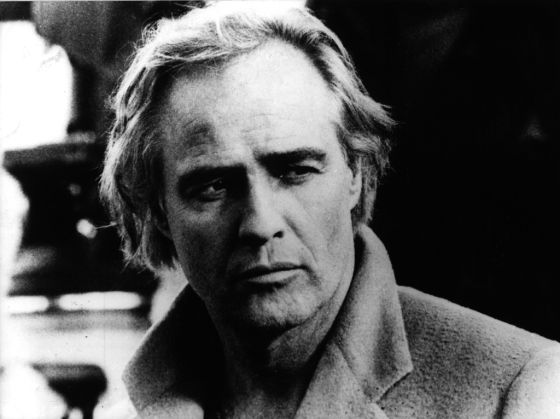 There’s no way around it, Brando changed screen acting. He took the practice, which was up to that point propelled by persona and expectation, and infused it with his own method cool of unpredictable rawness. Brando’s performances simply don’t age the way that the work of the icons who preceded him do. Eleven years after his death, we’re only now beginning to unravel who this giant of popular culture truly was. We know why he matters, and understand that he will be remembered. But now we have a much clearer notion as to how we should remember him.
There’s no way around it, Brando changed screen acting. He took the practice, which was up to that point propelled by persona and expectation, and infused it with his own method cool of unpredictable rawness. Brando’s performances simply don’t age the way that the work of the icons who preceded him do. Eleven years after his death, we’re only now beginning to unravel who this giant of popular culture truly was. We know why he matters, and understand that he will be remembered. But now we have a much clearer notion as to how we should remember him.
So why be scanned into a computer? The specific question goes unanswered, but the bizarre, semi-human image on a lonely desktop computer proves to be an irresistable representation for what we come to understand as the fraying inner life of Marlon Brando (as much as the complex inner life of anyone can be understood within the confines of a two hour retrospective, anyhow), one of very, very few movie stars who certainly do not need to be scanned in order to live on. Marlon Brando is, and was already eternal. Listen to Me Marlon is a fitting and accomplished examination of the man behind the legacy.
